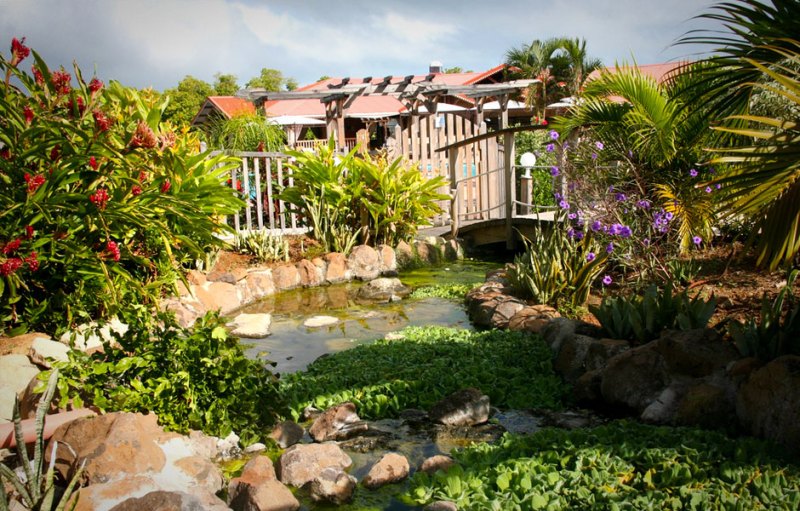
PLAY

It’s not hard to find remote, tourist-free areas throughout the island. The town of Le Diamant is less than 30 minutes south of Aimé Césaire International Airport (FDF) and offers plenty to see and do. The area’s Diamond Beach is popular among locals, but far less crowded than the touristy Pointe du Bout. It’s also a great place to snap a few photos of famous Diamond Rock.
On a nearby hilltop, the Anse Cafard Slave Memorial is perhaps one of Martinique’s most beautiful and moving tributes to the island’s jagged history of slavery. Here, twenty, stoic, hulking stone statues stand in formation overlooking the Caribbean Sea and Diamond Beach below. The installation commemorates an 1830 tragedy in which a slave ship crashed into the rocks just offshore killing all of the sailors, passengers, and slaves aboard.
Martinique is a large, lush, green island with no shortage of hiking opportunities. For outdoor-loving travelers, the lack of trail crowds makes it an ideal destination for hiking in solitude. While it may lack the notoriety of Krakatoa and Everest, La Montagne Pelée (literally “the bald mountain”) is among the world’s deadliest mountains. In 1902, after many unheeded warnings, 30,000 locals were snuffed out in an eruption that lasted several days. In the wake of the tragedy, however, the resulting molten lava and destruction carved out one of the island’s most fascinating and beautiful trails. Of the three official ascents to the volcano’s summit, check the well-marked L’Aileron route. It provides a beautiful, mixed-terrain climb with stunning views along the way.
Related: Micro Guide: The Best of St. John
EAT
As a French outpost, Martinique’s food scene is heavily influenced by the cuisines of mainland France, as well as Africa and South Asia. In short order, the island’s most well-known signature dishes include accras de morue (a fritter typically made with salt fish), boudin Creole (blood sausage made with pork, pig’s blood, and other ingredients), boudin blanc (a white sausage with a mixture of pork and seafood — usually prawns, sea conch, and crab), and fricassée de chatrou (a stew with octopus, onions, tomatoes, lemons, and other spices).
Like most islands in the Caribbean, the best places to eat local are small, no-frills, “dive”-style joints. Perhaps the best starting point is in the island’s capital. Fort-de-France’s century-old Marché aux Epices (Spice Market) houses dozens of vendors under a single roof, all peddling every manner of local fruits, vegetables, meats, and desserts. But the real gem is Chez Carole — a simple, well-known eatery with a rotating selection of traditional Creole dishes. The menu includes all of the above, plus they make a perfect planteur — the island’s unique version of a rum punch.
SLEEP

Martinique has managed to stave off the onslaught of resorts, Burger Kings, and Margaritaville-esque bars prevalent on almost every island within 400 miles. It’s ideal for travelers looking for small, boutique accommodations with plenty of French-meets-Caribbean charm.
In an unassuming residential neighborhood on the island’s south Atlantic coast, Hotel Cap Macabou neatly straddles the line between a full-service, beachfront hotel and a quaint bed-and-breakfast. By day, the large sundeck is a near-perfect place to relax and feels far more luxurious than the property’s three-star rating. After the sun goes down, the onsite restaurant bar La Kalinda serves up legitimate Creole dishes on an alfresco dining terrace. The adjoining beach is a little rough around the edges, but it’s a perfect place to make use of the provided kayaks and you’re virtually guaranteed not to have company.
Editors' Recommendations
- Your Key West travel guide for enjoying Florida’s more bohemian side
- Medellín Travel Guide: Where to Stay, What to Do, and More
- Indianapolis Travel Guide: Rediscovering the City at the Crossroads
- Tick Off Your Bucket List from Home with Airbnb’s Online Experiences
- Get Lost on the Best Virtual Tours Around Google Earth



